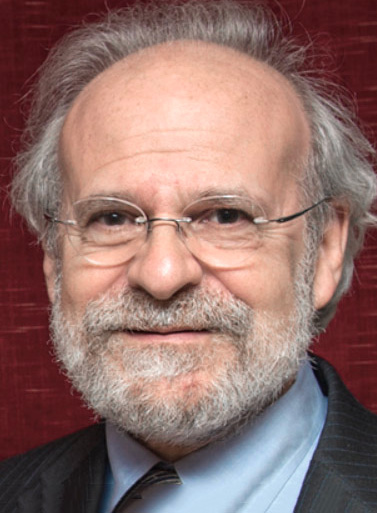

 Interested in learning more about routing security? How it can affect your connectivity supply chain? What are best practices for enterprises and organizations? What is the role of CSIRTs in securing routing? What are governments doing now, and planning to do in the future around routing security?
Interested in learning more about routing security? How it can affect your connectivity supply chain? What are best practices for enterprises and organizations? What is the role of CSIRTs in securing routing? What are governments doing now, and planning to do in the future around routing security?
 ome 50 years ago, at the Palo Alto Research Centre of that renowned photocopier company Xerox, a revolutionary approach to local digital networks was born. On the 22nd of May 1973, Bob Metcalf authored a memo that described "X-Wire," a 3Mbps common bus office network system developed at Xerox's Palo Alto Research Center (PARC).
ome 50 years ago, at the Palo Alto Research Centre of that renowned photocopier company Xerox, a revolutionary approach to local digital networks was born. On the 22nd of May 1973, Bob Metcalf authored a memo that described "X-Wire," a 3Mbps common bus office network system developed at Xerox's Palo Alto Research Center (PARC).
 Project Liberty's Institute sat down with Dave Clark, an early contributor to the TCP/IP protocols that built and run the Internet, and one of the expert advisors on DSNP, the Decentralized Social Networking Protocol. Dave Clark is Senior Research Scientist at MIT's Computer Science and Artificial Intelligence Laboratory (CSAIL) and Fellow of the National Academy of Engineering and the American Academy of Arts and Sciences.
Project Liberty's Institute sat down with Dave Clark, an early contributor to the TCP/IP protocols that built and run the Internet, and one of the expert advisors on DSNP, the Decentralized Social Networking Protocol. Dave Clark is Senior Research Scientist at MIT's Computer Science and Artificial Intelligence Laboratory (CSAIL) and Fellow of the National Academy of Engineering and the American Academy of Arts and Sciences.
 The idea for Ethernet was born fifty years ago in May 1973 when Robert Metcalf coined the word Ethernet. He had been studying ALOHAnet, developed at the University of Hawaii in 1971 and was the first public demonstration of a wireless packet data network. Metcalf used the work Ethernet as a reference to luminiferous aether, a concept postulated in the 17th century to explain how light could be transmitted through a vacuum.
The idea for Ethernet was born fifty years ago in May 1973 when Robert Metcalf coined the word Ethernet. He had been studying ALOHAnet, developed at the University of Hawaii in 1971 and was the first public demonstration of a wireless packet data network. Metcalf used the work Ethernet as a reference to luminiferous aether, a concept postulated in the 17th century to explain how light could be transmitted through a vacuum.
 At Verisign, we believe that continuous improvements to the safety and security of the global routing system are critical for the reliability of the internet. As such, we've recently embarked on a path to implement Resource Public Key Infrastructure (RPKI) within our technology ecosystem as a step toward building a more secure routing system. In this blog, we share our ongoing journey toward RPKI adoption and the lessons we've learned as an operator of critical internet infrastructure.
At Verisign, we believe that continuous improvements to the safety and security of the global routing system are critical for the reliability of the internet. As such, we've recently embarked on a path to implement Resource Public Key Infrastructure (RPKI) within our technology ecosystem as a step toward building a more secure routing system. In this blog, we share our ongoing journey toward RPKI adoption and the lessons we've learned as an operator of critical internet infrastructure.
 In a recent workshop, I attended, reflecting on the evolution of the Internet over the past 40 years, one of the takeaways for me is how we've managed to surprise ourselves in both the unanticipated successes we've encountered and in the instances of failure when technology has stubbornly resisted to be deployed despite our confident expectations to the contrary! What have we learned from these lessons about our inability to predict technology outcomes?
In a recent workshop, I attended, reflecting on the evolution of the Internet over the past 40 years, one of the takeaways for me is how we've managed to surprise ourselves in both the unanticipated successes we've encountered and in the instances of failure when technology has stubbornly resisted to be deployed despite our confident expectations to the contrary! What have we learned from these lessons about our inability to predict technology outcomes?
 The IETF met in November 2022 in London. Among the many sessions that were held in that meeting was a session of the Decentralised Internet Infrastructure Research Group, (DINRG). The research group's ambitions are lofty: DINRG will investigate open research issues in decentralizing infrastructure services such as trust management, identity management, name resolution, resource/asset ownership management, and resource discovery.
The IETF met in November 2022 in London. Among the many sessions that were held in that meeting was a session of the Decentralised Internet Infrastructure Research Group, (DINRG). The research group's ambitions are lofty: DINRG will investigate open research issues in decentralizing infrastructure services such as trust management, identity management, name resolution, resource/asset ownership management, and resource discovery.
 When I was first advocating home networking at Microsoft, we encountered a problem. The existing systems and applications had implicitly assumed they were inside a safe environment and didn't consider threats from bad actors. Early Windows systems hadn't yet provided file system with access control and other protections though there were some attempts to have separate logins to keep some settings separate.
When I was first advocating home networking at Microsoft, we encountered a problem. The existing systems and applications had implicitly assumed they were inside a safe environment and didn't consider threats from bad actors. Early Windows systems hadn't yet provided file system with access control and other protections though there were some attempts to have separate logins to keep some settings separate.
 Do you know someone who deserves recognition for helping build the Internet in their region or country? Or someone who made the Internet more secure through the work they've done? Or someone who made some major technical innovation that made the Internet faster or better?
Do you know someone who deserves recognition for helping build the Internet in their region or country? Or someone who made the Internet more secure through the work they've done? Or someone who made some major technical innovation that made the Internet faster or better?
 In 1987, CompuServe introduced GIF images, Steve Wozniak left Apple and IBM introduced the PS/2 personal computer with improved graphics and a 3.5-inch diskette drive. Behind the scenes, one more critical piece of internet infrastructure was quietly taking form to help establish the internet we know today. November of 1987 saw the establishment of the Domain Name System protocol suite as internet standards.
In 1987, CompuServe introduced GIF images, Steve Wozniak left Apple and IBM introduced the PS/2 personal computer with improved graphics and a 3.5-inch diskette drive. Behind the scenes, one more critical piece of internet infrastructure was quietly taking form to help establish the internet we know today. November of 1987 saw the establishment of the Domain Name System protocol suite as internet standards.